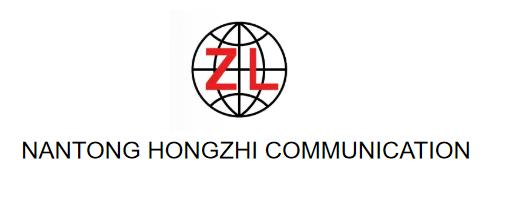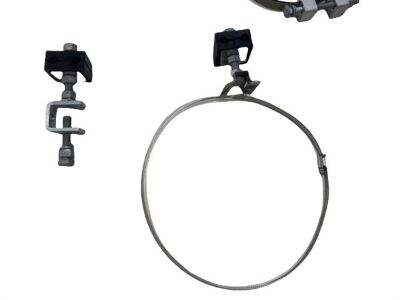Trong lĩnh vực An toàn và Bảo vệ Công nghiệp, việc lắp đặt kẹp đầu cuối cũng rất quan trọng
HONGZHI hiểu rõ tầm quan trọng của việc sử dụng các phương pháp đúng khi lắp đặt kẹp đầu cuối nhằm tránh rủi ro và bảo vệ kết cấu. Tại đây, chúng ta sẽ cùng tìm hiểu nơi để có được những hướng dẫn lắp đặt tốt nhất, cũng như những vấn đề thường gặp và cách bạn có thể phòng tránh chúng.
Hướng dẫn lắp đặt kẹp đầu cuối tốt nhất là gì và tìm ở đâu
Hướng dẫn lắp đặt kẹp cuối tuyến chính xác và chi tiết là yếu tố quan trọng để cài đặt hệ thống thành công. Trang web của nhà sản xuất thực tế là một trong những nguồn tài liệu tốt nhất cung cấp hướng dẫn chính xác. Sách hướng dẫn và video lắp đặt HONGZHI có sẵn trên trang web của chúng tôi, những tài liệu này sẽ giúp người dùng hoàn thành từng bước lắp đặt. Hơn nữa, một số diễn đàn và cộng đồng trực tuyến chuyên về lĩnh vực cụ thể có thể là nguồn tài nguyên quý giá để trao đổi kinh nghiệm và giải quyết các sự cố phổ biến. Bằng cách kiểm chứng từ nhiều nguồn khác nhau, thợ lắp đặt có thể yên tâm rằng họ đang tuân thủ đúng các bước trong quá trình lắp đặt nhằm đảm bảo an toàn và độ ổn định tối ưu.
Các vấn đề và giải pháp trong lắp đặt kẹp cuối tuyến
Tuy nhiên, khi lắp đặt kẹp đầu cuối theo đúng tất cả các hướng dẫn lắp đặt được khuyến nghị cho dây rơi, một số vấn đề có thể xảy ra. Một ví dụ về vấn đề đã biết là mô-men xoắn không đủ, có thể dẫn đến độ siết lỏng và hư hỏng chi tiết gia công sớm. Để ngăn ngừa sự cố này, thợ lắp đặt nên sử dụng cờ-lê đo mô-men khi siết chặt bu-lông ở mức độ mô-men được nhà sản xuất khuyến nghị. Ngoài ra còn có một vấn đề chung hơn là khoảng cách giữa các thành phần nối ghép này và dây dẫn không phải lúc nào cũng đủ để tránh làm hư hại dây dẫn theo thời gian. Để tránh điều này, thợ lắp đặt cần kiểm tra kích thước và định vị kẹp sao cho có đủ khoảng trống. Hơn nữa, việc sử dụng kẹp đầu cuối có kích cỡ hoặc loại không phù hợp máy kẹp căng cho một ứng dụng cụ thể có thể dẫn đến các vấn đề tương thích và làm ảnh hưởng đến an toàn. Và như luôn luôn – hãy tham khảo thông số kỹ thuật và khuyến nghị của nhà sản xuất để lựa chọn loại kẹp phù hợp!
Các thợ lắp đặt thực hiện đúng các quy trình lắp đặt tốt nhất đối với kẹp cuối đường và có hiểu biết về những vấn đề thường gặp – cũng như các giải pháp – sẽ giúp các công trình công nghiệp luôn an toàn và bền vững. HONGZHI cam kết cung cấp kẹp cuối đường chất lượng cao cùng với công nghệ chuyên nghiệp và các giải pháp hoàn hảo, dịch vụ cạnh tranh tốt nhất để công việc của bạn diễn ra suôn sẻ!
Lắp đặt kẹp cuối đường vì an toàn: Những điều bạn cần biết
Khi nói đến an toàn trong các hệ thống điện, việc lắp đặt kẹp cuối đường là yếu tố then chốt. Kẹp cuối đường được sử dụng để cố định dây dẫn trên không trên các cột thiết bị và đảm bảo rằng dây dẫn ít bị uốn cong nhất có thể khi gió thổi. Việc lắp đặt kẹp cuối đường phải được thực hiện chính xác để ngăn ngừa tai nạn và kéo dài tuổi thọ cho các đường dây điện.
Trước khi bắt đầu quá trình lắp đặt, cần phải tập hợp đầy đủ tất cả các công cụ và vật liệu cần thiết. Bạn sẽ cần kẹp đầu cuối, bu-lông, đai ốc và vòng đệm, cũng như một cờ lê lực xoắn. Ngoài ra, hãy đảm bảo mang theo các thiết bị an toàn như găng tay làm việc, kính bảo hộ và mũ bảo hiểm để bảo vệ bản thân trong suốt quá trình lắp đặt.
Để hoàn thành việc lắp đặt, hãy xác định một điểm đầu cuối phù hợp nơi bạn sẽ lắp kẹp đầu cuối. Đảm bảo rằng không có đường dây điện nào đang có điện. Cố định kẹp đầu cuối vào cột bằng các bu-lông U, đai ốc và vòng đệm đi kèm. Siết chặt các bu-lông theo khuyến nghị của nhà sản xuất bằng cờ lê lực xoắn.
Sử dụng bất kỳ phần cứng nào cần thiết để nối các đường dây điện vào kẹp sau khi đã lắp kẹp vào vị trí đầu cuối kẹp Dẫn Xuống . Đảm bảo các dây được kéo thẳng và căng để tránh bị võng. Kiểm tra chắc chắn rằng tất cả các mối nối đều được siết chặt trước khi cấp điện cho các đường dây.
Các mẹo và thủ thuật để thành công
Mẹo và hướng dẫn để lắp đặt kẹp đầu cuối nhằm đạt hiệu suất tối ưu và hiệu quả truyền tải điện cao nhất.
Như thường lệ, hãy đảm bảo lắp đặt theo đúng hướng dẫn của nhà sản xuất.
Kiểm tra kẹp đầu cuối và các bộ phận đi kèm để phát hiện hư hỏng hoặc lỗi rõ ràng trước khi lắp đặt.
Tránh tai nạn bằng cách sử dụng các công cụ và thiết bị phù hợp với công việc bạn đang làm.
Kiểm tra tất cả các mối nối và siết chặt các bu-lông đến mức mô-men xoắn được khuyến nghị vì chúng có thể đã bị nới lỏng theo thời gian.
Sau khi dây dẫn đã được lắp đặt, hãy kiểm tra các đường dây điện để đảm bảo chúng hoạt động trước khi tiếp tục bước tiếp theo.
Các Thực Hành Tốt Nhất Khi Lắp Đặt Kẹp Đầu Cuối
Đây là lý do tại sao việc tuân thủ đúng các quy trình lắp đặt kẹp đầu cuối lại rất quan trọng, nhằm đảm bảo các đường dây điện trên cao luôn an toàn và ổn định:
Thường xuyên kiểm tra tình trạng (mức độ mài mòn) của kẹp đầu cuối và thay thế theo hướng dẫn được nêu ra khi cần thiết.
Giữ dây điện căng để tránh bị võng xuống nhằm đạt kết quả tốt nhất.
Ghi lại mọi dịch vụ lắp đặt và bảo trì để tham khảo trong tương lai.
Đảm bảo rằng bất kỳ ai tham gia lắp đặt kẹp đầu kín đều biết cách thực hiện và đảm bảo an toàn khi sử dụng.
Đối với các trường hợp lắp đặt khó khăn, hãy sử dụng thợ điện hoặc nhà thầu được chứng nhận để tuân thủ các tiêu chuẩn ngành.
Với việc lắp đặt đúng cách của kẹp đầu kín kẹp căng dây cáp , những thực hành tốt nhất và hướng dẫn này tuân theo nhằm đảm bảo an toàn và bảo vệ cho các đường dây điện trên không. Như thường lệ, khi làm việc với các hệ thống điện, hãy luôn đặt an toàn lên hàng đầu.
Mục Lục
- Trong lĩnh vực An toàn và Bảo vệ Công nghiệp, việc lắp đặt kẹp đầu cuối cũng rất quan trọng
- Hướng dẫn lắp đặt kẹp đầu cuối tốt nhất là gì và tìm ở đâu
- Các vấn đề và giải pháp trong lắp đặt kẹp cuối tuyến
- Lắp đặt kẹp cuối đường vì an toàn: Những điều bạn cần biết
- Các mẹo và thủ thuật để thành công
- Các Thực Hành Tốt Nhất Khi Lắp Đặt Kẹp Đầu Cuối


